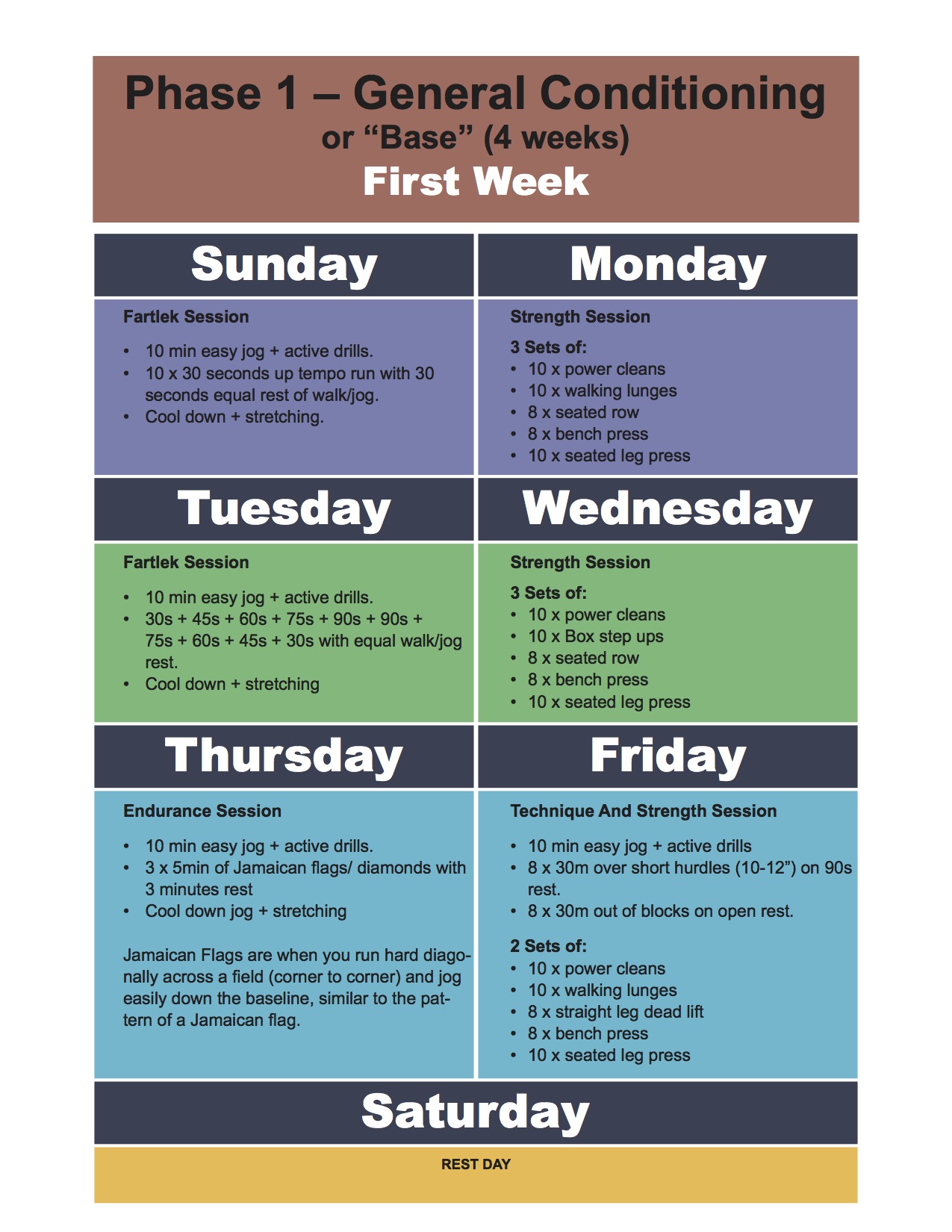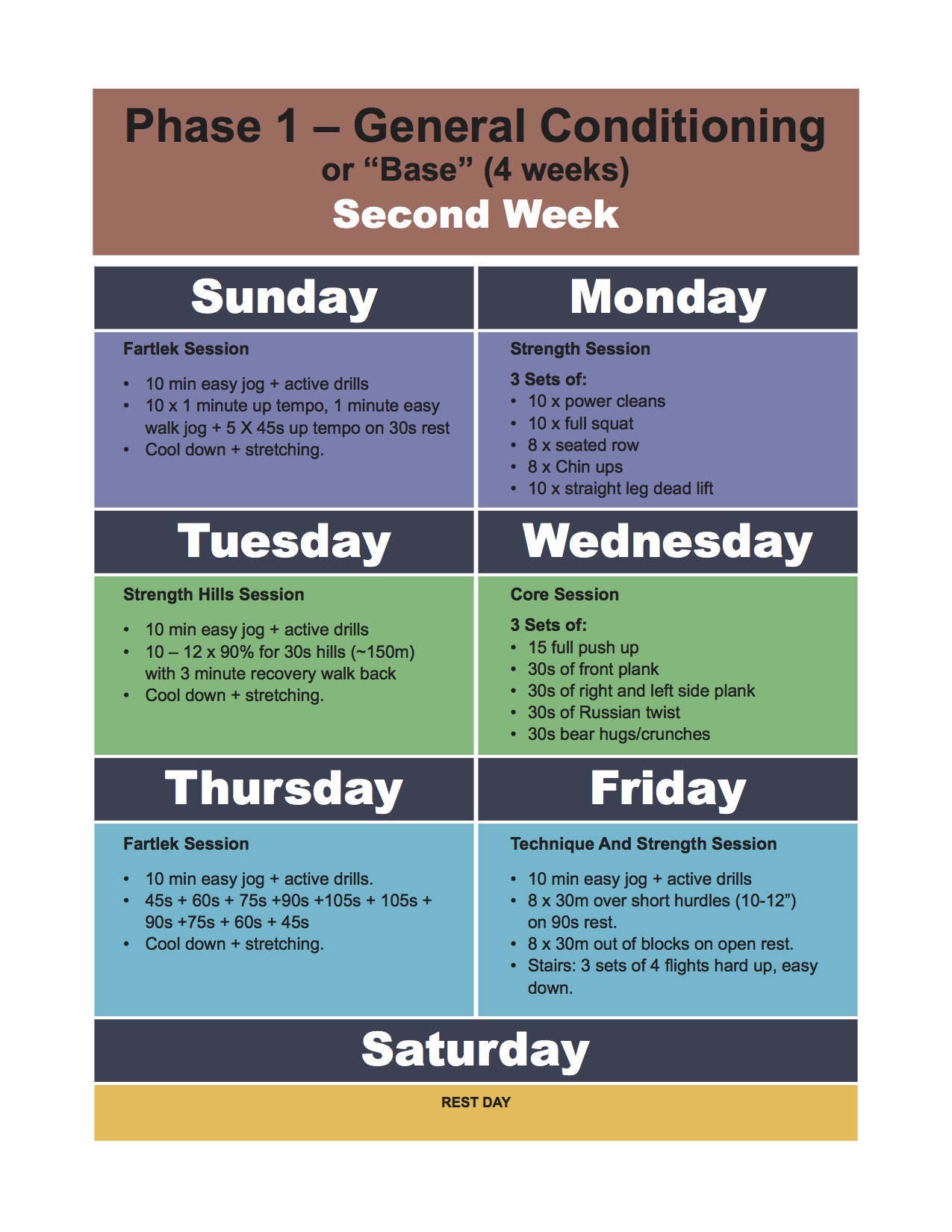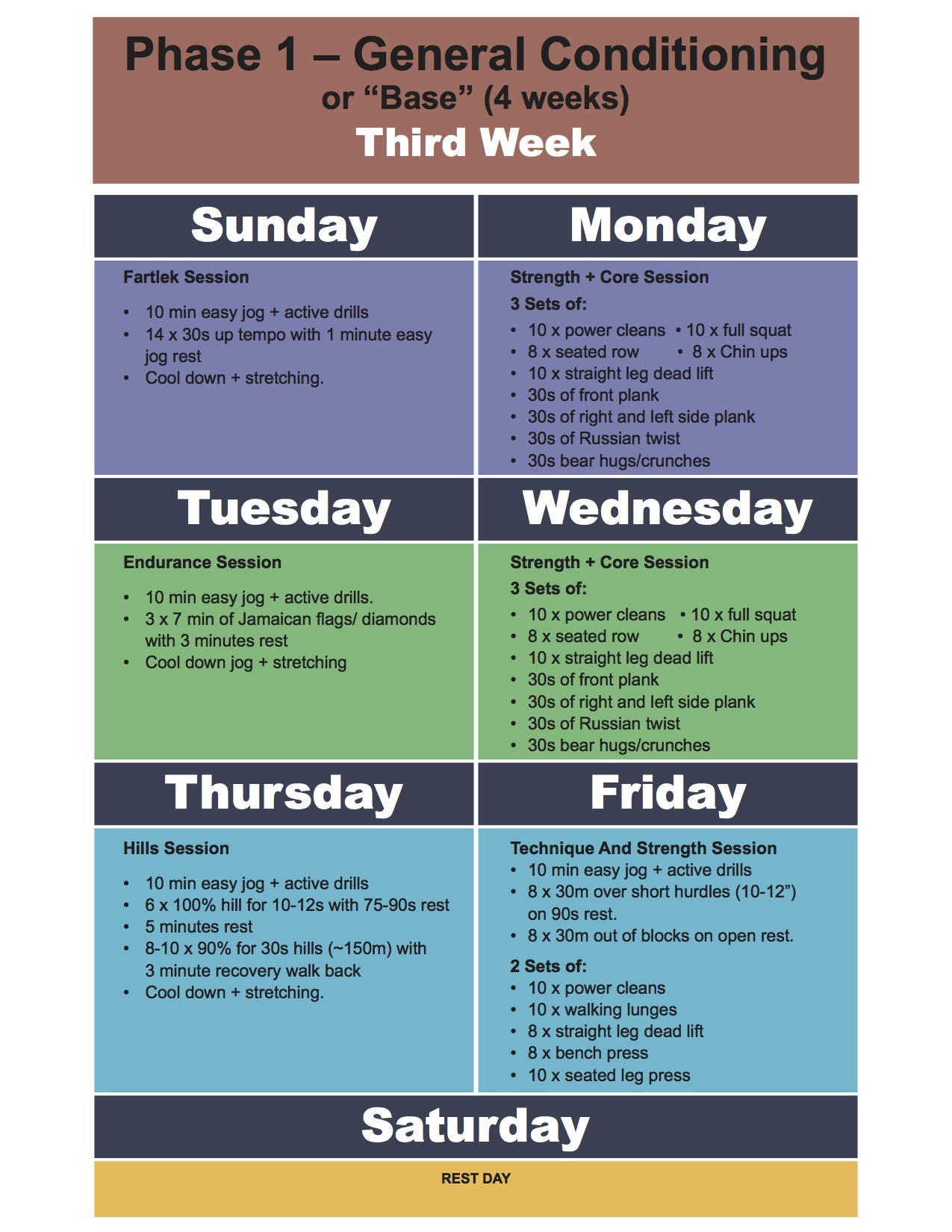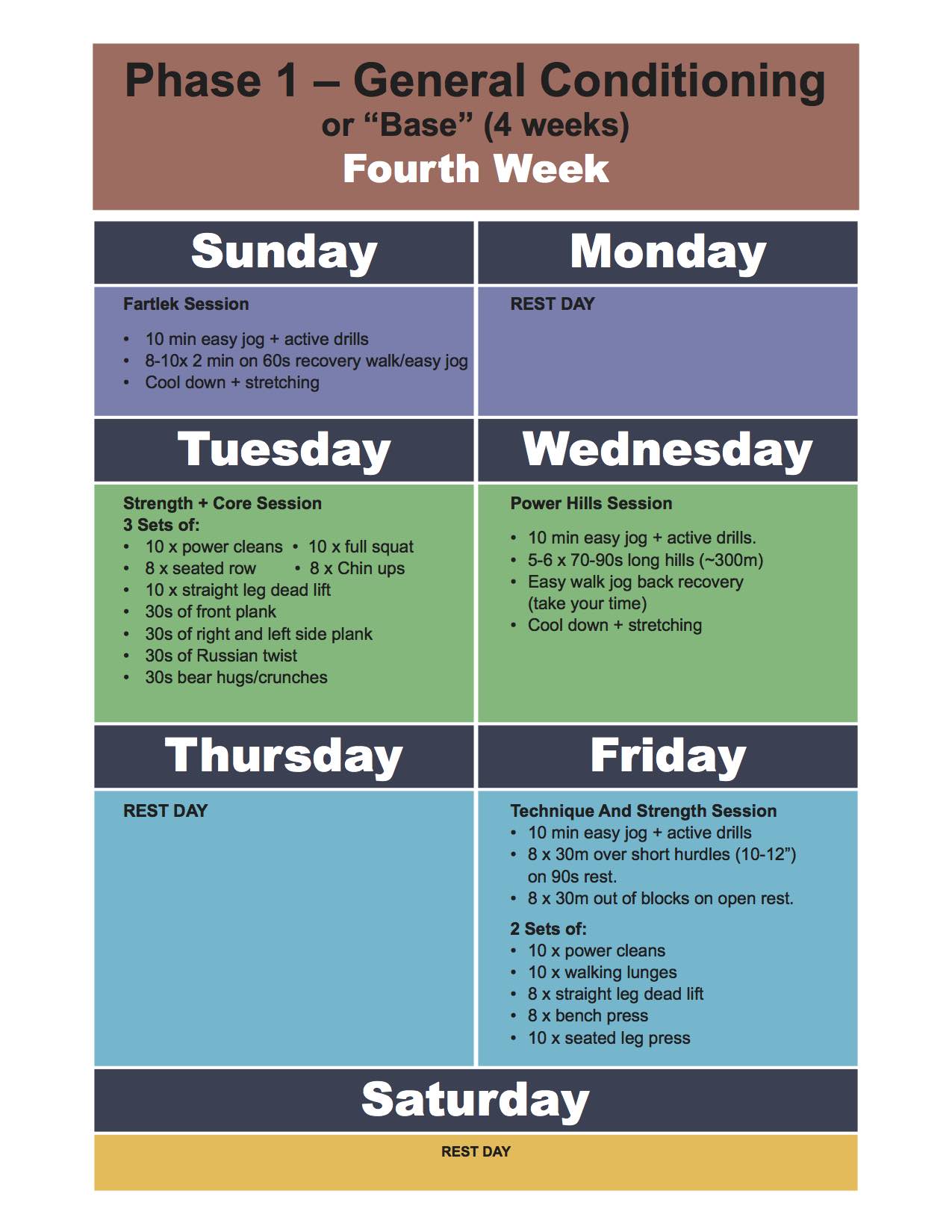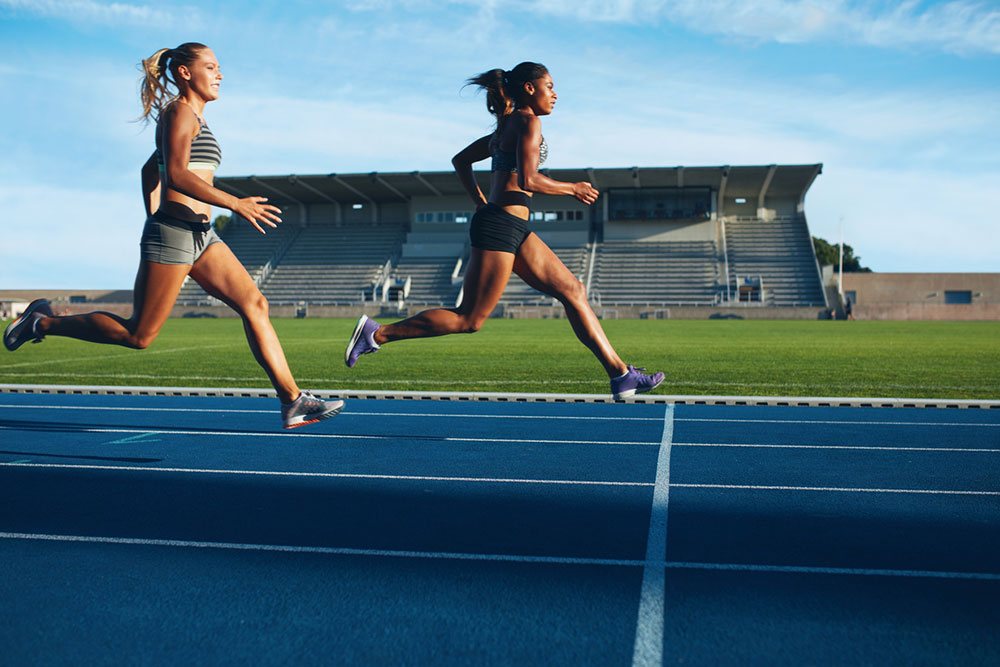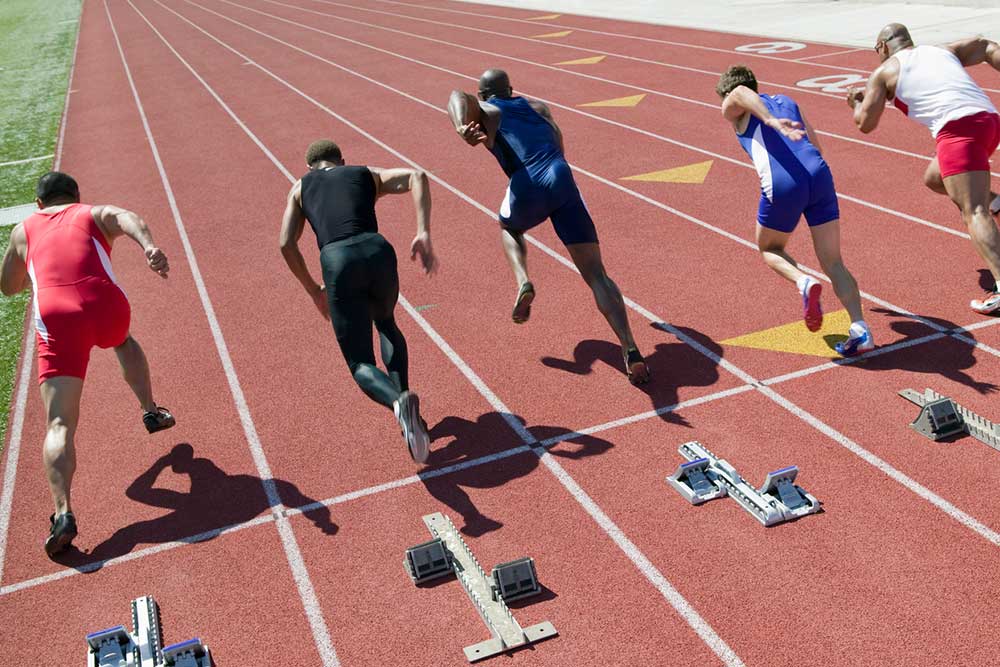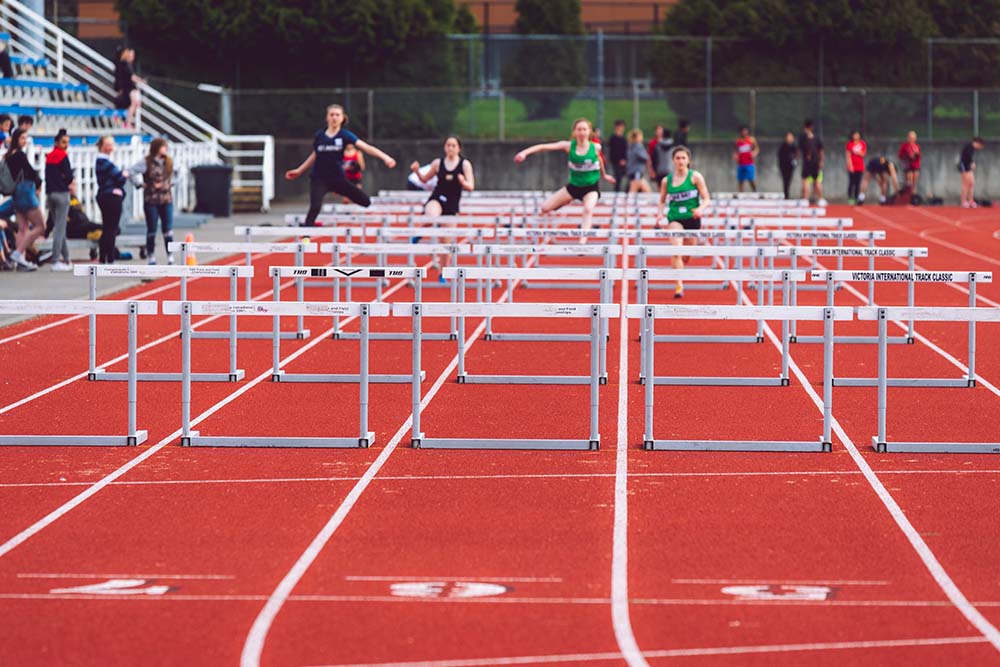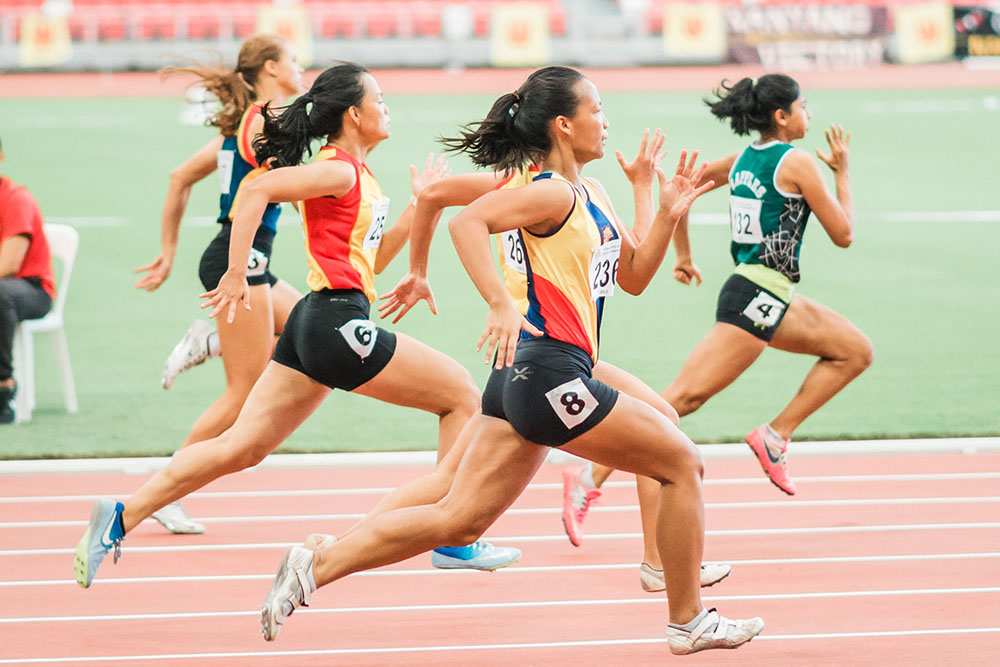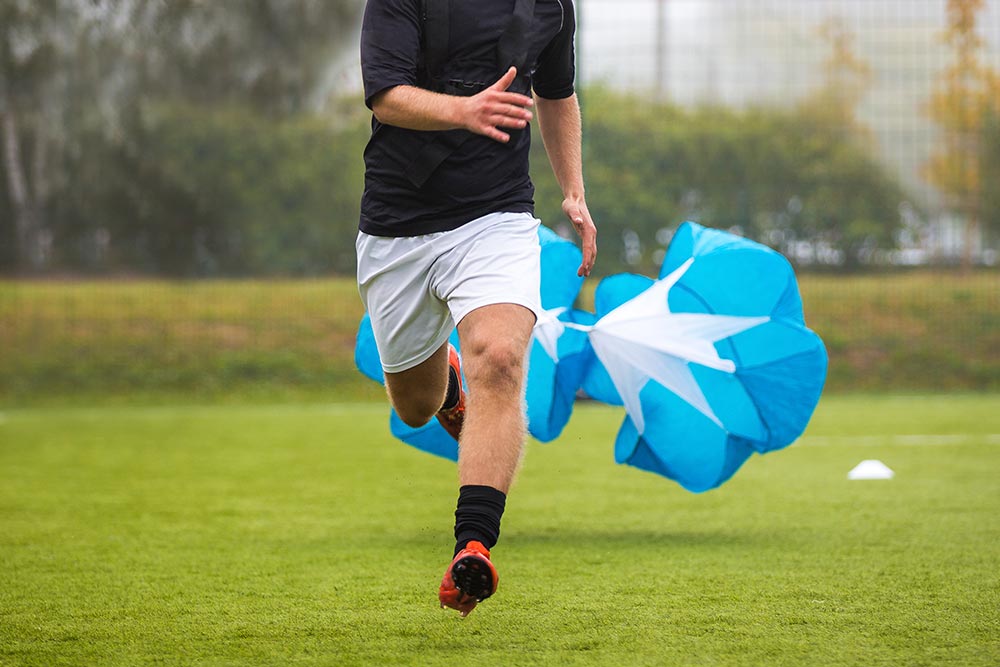So You Want To Be A Sprinter? – Part 5

Evan Stevens
So You Want To Be A Sprinter? – Part 1
So You Want To Be A Sprinter? – Part 2
So You Want To Be A Sprinter? – Part 3
So You Want To Be A Sprinter? – Part 4
Part 5: Basic/Sample Training Program
Now we come to the training itself. We have an understanding of some of the main parts of sprinting, time to get ourselves into gear and put together a training program for ourselves. The one that I have put together below is meant to be followed as a basic program, an introduction to the sport, culminating with a competition, which will give us an idea of how our training went. This 12 week program is broken down into “phases” just as we would if we were to follow through a whole year of training (I’ll be showing an example of what a year might look like after the main program). The phases that we will follow in our 12 week program are as follows:
General Conditioning Phase
- Also known as “base” phase.
- General aerobic conditioning to build strength and endurance to carry through for the rest of the phases. Longer and lower intensity allows for the build into higher but shorter intensity sessions later.
Main Conditioning Phase
- The intensity is raised, we key in on technique and maximal strength training.
Specific Phase
- Also known as “sharpening” or as a conversion phases, where we are trying to change the power and strength from conditioning into speed.
- Higher intensity, lower volume.
Competition phase
- Also called “peaking.”
- Very high intensity, very low volume. Lots of rest in intervals as we are gearing up for our competition.
Each phase is roughly the same amount of time for now (as we are just starting out and have limited amount of time to work with), however, the competition phase is usually the shortest. We do not want to maintain the “peak” for too long as we start to lose some of the base and strength we built during the other phases. We can only be at peak for so long before we have to drop back down to our specific and conditioning phases. For our purposes in this 12 week program we shouldn’t have an issue however.
Phase 1 – General Conditioning or “Base” (4 weeks)
(Note: Fartlek is a Swedish term meaning “speed play.” Fartlek sessions should tax you aerobically but not anaerobically – you should not be working above 75%)
Phase 2 – Main Conditioning Phase (3 weeks)
*Ins and Outs: In means push, or “in the zone”, out means float/maintain velocity without tapping the gas, “out of the zone.” Ins and outs can look anything like:
- 30m acceleration | 10m IN | 20m OUT | 10m IN | decelerate
- 30m acceleration | 15m IN | 15m OUT | 15m IN | decelerate
- 30m acceleration | 20m IN | 20m OUT | 20m IN | decelerate
- 30m acceleration | 10m OUT | 30m IN | 10m OUT | decelerate
Phase 3 – Specific Phase (3 weeks)
*Flys: Flys are similar to ins and outs, just minus the outs (see phase 2, week 3). Accelerate in, and then push for the fly distance, focusing on long, powerful strides and good technique.
Phase 4 – Competition or “Peak” Phase (2 weeks)
*Precomp: Means “precompetition” (duh). You act as if you are about to step out on the track and race that day so you go through all the same motions you would but the actual race and cool down. It usually entails doing your normal warm-up routine, putting on your spikes, doing a few 30m accelerations (usually four) and then calling it day.
So that is a basic 12 week training program. It is designed to take you from relatively little fitness to being comfortable at racing a 100m or 200m.
The first 4 weeks are all about fartlek and getting some base. The base is important because it allows you to handle the harder training later without hurting yourself or suffering, as well as just completing the workouts. You need to put in the base to run fast, simple as that. You do not have to go hard during base, you run how you feel, but you need to get the strength in your legs. But let’s say you really start to enjoy running and these short and fast races. What then? Well, we build this 3 month program into a full year, extending the first three phases.
Unlike distance runners who have cross country and road races on top of an indoor and outdoor season (so they are doing lots of little peaks and they have to very specific about their base), sprinters really only have the indoor and outdoor season (primarily a long outdoor season). So that means lots of time for building base, being concise with conditioning and honing in on the specific sessions throughout the year.
To put a whole year down might look something like this:
The differences between our 12 week plan and a yearly plan aren’t drastic; the length of each phase varies as well as the specificity can vary. When we divide the specific phases we are really just dividing the work load.
We can go more in depth into the technique and the workouts. We can add some different drills to our routine, such as adding hurdle drills or bounding to some workouts. We break the competition and peak phase apart; the long season means that there are multiple races and we often start with some off distance races to get some strength and different feel in our legs and then move into our bread and butter discipline.
The peak is a short time period that differs for everyone. Some people can peak in as little as 36 hours; others need almost 21 days to fully peak. It all depends on an individual’s genetics, physiology and experience level.
After the season is done we go into a transition phase, often affectionately called “down time.” This is what some of us call “fat time,” as we typically do anything BUT run. Some people abuse their bodies with all kinds of junk food that they denied themselves during the year while they were in training mode (please don’t do that), but most people just do something other than run. Play other sports, do something else, whatever. Down time usually varies for people and depends on your yearly goals. Distance runners usually only take about two weeks, but they have a short turn around between outdoors and cross country/road racing season. Sprinters can take a little more time if they so choose but most start going for some base runs and put in some aerobic work after about two to three week just so they aren’t too far behind the ball.
The best thing to do though is to just talk to your coach and plan out the season and what your goals are for this year and next and build from there. As good as an online training program can be, the best thing you can do as a budding athlete is finding a coach you can work with and thrive under. A coach offers you a person to talk to about your concerns, working around situations (general life events, injury, etc.) and because they are there at every practice they see how your body is handling the work and can adjust accordingly.
So there we have it. All about sprinting plus a basic three month training program. I hope you can find some useful nuggets of info here to help guide you in your sporting endeavours. A big thank you to Joel Skinner and Dr. Jillian Drouin of the Sarnia Athletics Southwest Track and Field Club for helping a lowly distance runner write about sprinting. Joel and Jillian have been invaluable sources of speed power knowledge; it is not every day you get to work with not only one of the best heptathletes in the world but also one of the best international level speed power coaches.
Here is what we have covered:
- Running Biomechanics
- Arm Swing
- Warming Up
- Starting Blocks
- Sample 12 Week Training Program
For those interested in continuing the conversation, Part 6 (the FINAL part) will cover some of the more in-depth aspects of sprinting and sport – genetics, physiology, and some points about psychology, task variability, and so on.
You Might Like:

